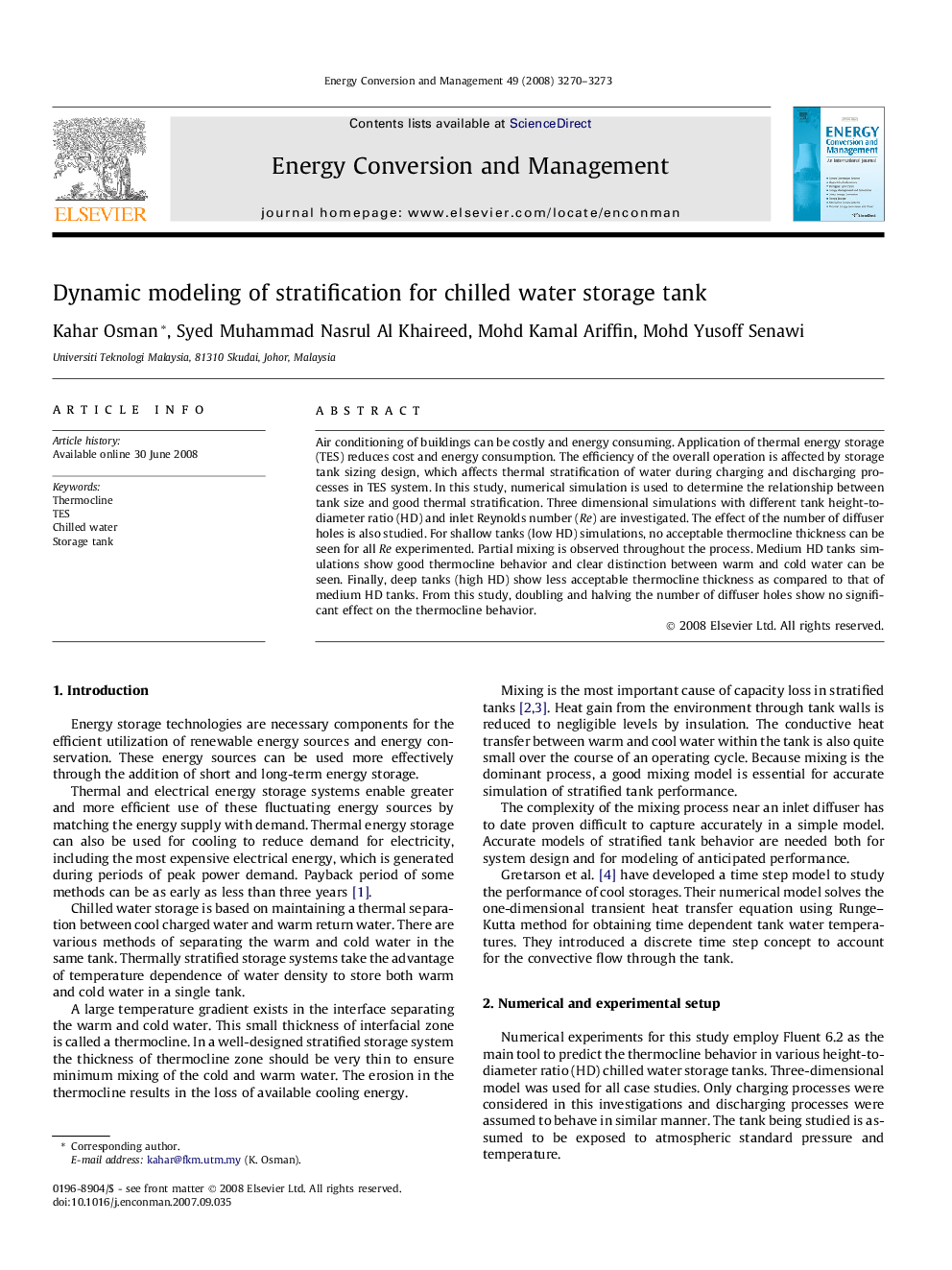| Article ID | Journal | Published Year | Pages | File Type |
|---|---|---|---|---|
| 766468 | Energy Conversion and Management | 2008 | 4 Pages |
Air conditioning of buildings can be costly and energy consuming. Application of thermal energy storage (TES) reduces cost and energy consumption. The efficiency of the overall operation is affected by storage tank sizing design, which affects thermal stratification of water during charging and discharging processes in TES system. In this study, numerical simulation is used to determine the relationship between tank size and good thermal stratification. Three dimensional simulations with different tank height-to-diameter ratio (HD) and inlet Reynolds number (Re) are investigated. The effect of the number of diffuser holes is also studied. For shallow tanks (low HD) simulations, no acceptable thermocline thickness can be seen for all Re experimented. Partial mixing is observed throughout the process. Medium HD tanks simulations show good thermocline behavior and clear distinction between warm and cold water can be seen. Finally, deep tanks (high HD) show less acceptable thermocline thickness as compared to that of medium HD tanks. From this study, doubling and halving the number of diffuser holes show no significant effect on the thermocline behavior.
